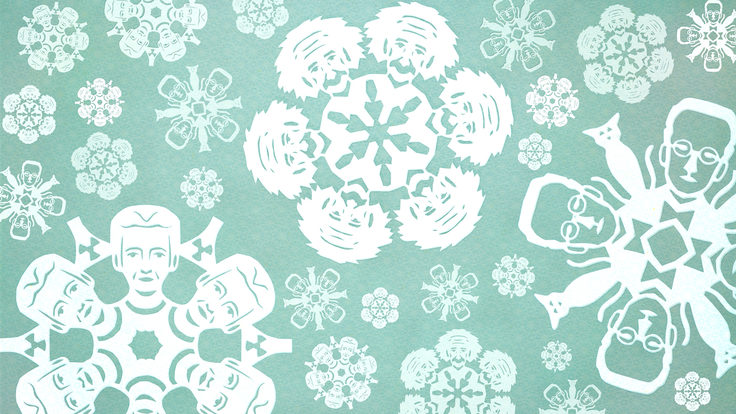
The ATLAS and CMS experiments have both accumulated 1 inverse femtobarn of data, an important milestone for both experiments. Image courtesy of CERN.
As of this week, the Large Hadron Collider has delivered 1 inverse femtobarn of integrated luminosity to ATLAS and CMS, two of the four experimental stations housed along the ring. This means the detectors will have gathered data from about 70 trillion proton-proton collisions. For comparison, the experiments collected just 45 inverse picobarns in all of 2010; 1 inverse femtobarn is equal to one thousand inverse picobarns.
Accelerator scientists promised 1 inverse femtobarn for the entire 2011 run, but met their goal just a few months after collisions began in March. The groups could see several more inverse femtobarns by the end of the year.
Scientists wasted no time analyzing the first few hundred inverse picobarns and announced their findings at the Physics at LHC conference last week. With five times more data than they had in 2010, researchers have been able to set more stringent limits on new physics. They haven’t observed anything new just yet but are beginning to explore uncharted territory.
“We spent 2010 rediscovering the Standard Model,” said Richard Hawkings, the deputy physics coordinator for the ATLAS experiment. “In 2011, we will push our detectors to the limit and make more precise measurements.”
Experimentalists have increased the sensitivity of the detectors to Standard Model processes, the events that account for much of the background signal in the hunt for new physics. Making the most precise measurements of these events could lead to an indirect hint of something new.

The LHC has delivered an integrated luminosity of one inverse femtobarn, nearly all of which has been recorded by the experiments. Image courtesy CERN
For example, the number of single top quarks scientists have spotted agrees well with what is predicted by the Standard Model, but with the new data they can begin to study the behavior between the top quark and the other, lighter quarks.
Despite finding no direct evidence of new physics, Hawkings says they have made significant inroads toward a discovery. “We’re closing in on supersymmetry,” he said. The data suggest that some of the theorized superparticles must have masses greater than 1 TeV, which narrows the window for observation. “We’ve looked through a lot of the space where supersymmetry could have been found, but there are still more corners to explore,” Hawkings said.
With only a few hundred inverse picobarns parsed at the time of the conference, LHC researchers weren’t able to match the Tevatron’s limits on the Higgs boson, though they have made some headway studying potential Higgs events that decay into two photons. Now that the experiments have received an integrated luminosity of 1 inverse femtobarn, researchers will have plenty more data to analyze before the European Physical Society and Lepton-Photon conferences this summer.
“The field is wide open for surprises, hints, speculations and false alarms,” Hawkings said. “We really need to see a hint of something new so we know what we can exclude and what we need to pursue further. But I really hope we get to see the first hint of the Higgs boson this year.”






